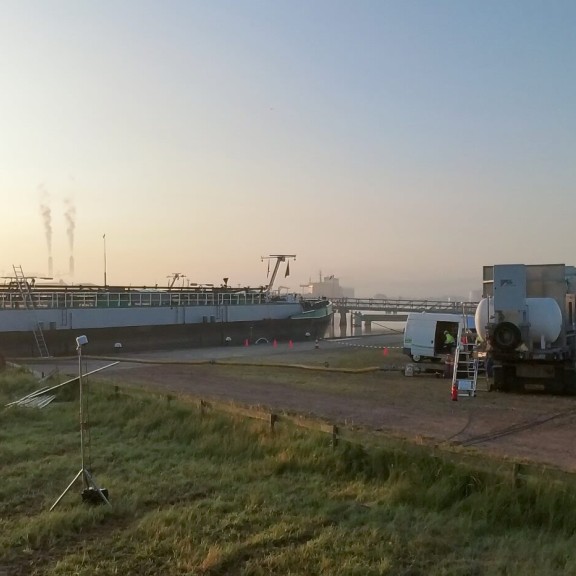
Amsterdam port facilitates degassing tests for barges
Tests with vapour processing installations were carried out in the port of Amsterdam. The aim of the newly developed installations is to process vapours from inland tankers in a safe and controlled way so that they no longer end up in the air. This is an important step towards clean shipping.
Testing by two parties
Two providers, Triple D and 24/7 Nature Power, tested their vapour processing installations at the ‘Groene Kade’ (‘Green Quay') in the port of Amsterdam. Both parties are working with a mobile vapour processing installation. Port of Amsterdam has been working for many years to enable safe degassing in the port. It is making the public 'Green Quay' available for the tests, as part of its efforts to create a sustainable port. This test is an important next step.
Permit possible in the event of success
During testing, the functioning of the installation was measured; how much is emitted of benzene and and residual vapours containing benzene. This determines whether the installation in question meets the set requirements. If the tests are successful, suppliers can apply for a permit from the North Sea Canal Area Environment Service.
Independent measurements
The North Sea Canal Area Environment Agency has commissioned an independent agency to conduct the test measurements that can be used to establish whether the installations meet the requirements or require further improvement.
National Taskforce on Degassing During Passage
The results of the trials are being evaluated in the ‘Taskforce on Degassing During Passage.’ Cora van Nieuwenhuizen, Minister of Infrastructure and Water Management, set up this taskforce in 2018 to ensure the smooth introduction of the national prohibition. The taskforce includes representatives of the central government, provincial authorities, ports, shipping companies, carriers, warehousing companies and vapour recovery providers. In introducing the national prohibition, it is important that an infrastructure is put in place that features installations that are able to process or recycle the residual cargo vapours.